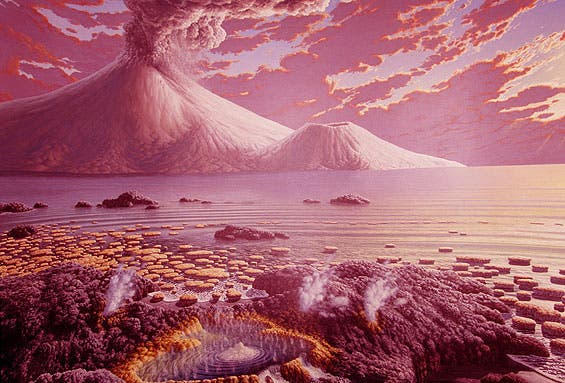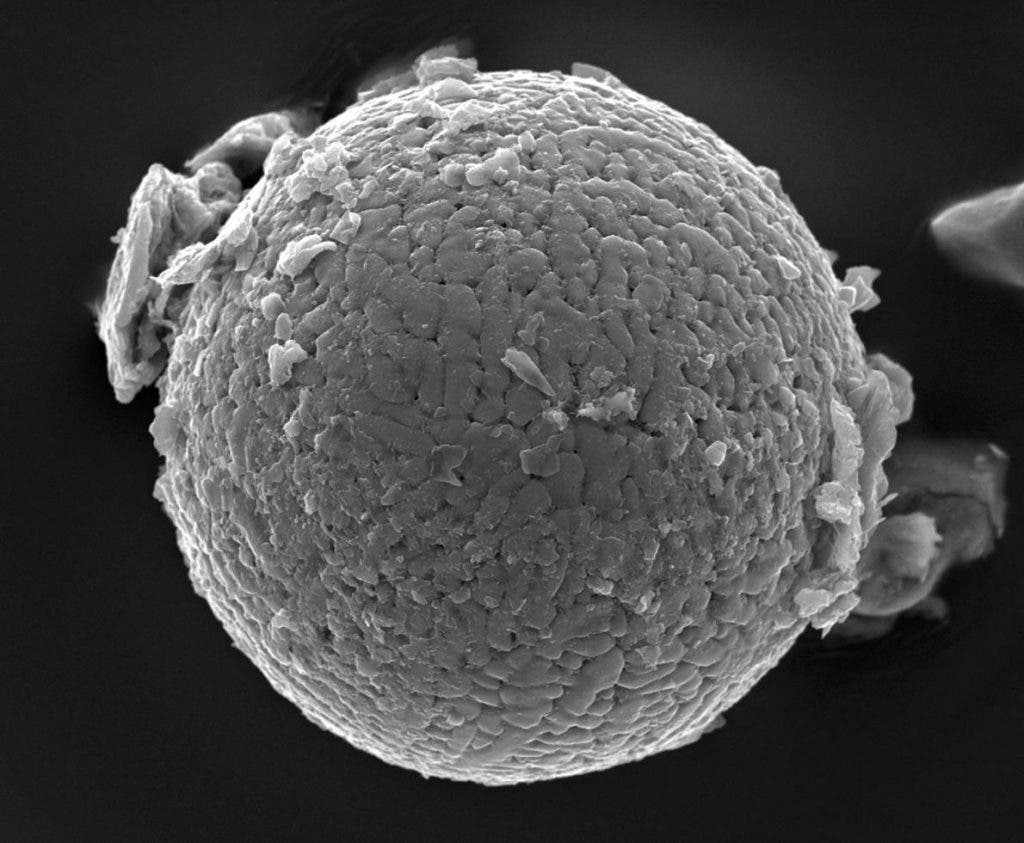There’s a lot you can tell with striking accuracy about Earth’s history by sampling. For instance, we know the Earth is roughly 4.54 billion years old because isotopes found in rocks decay in a predictable manner. Fossils can be used as “paleothermometers” and researchers can infer the temperature of the atmosphere and oceans millions of years ago. Estimating the chemical composition of the ancient Earth is definitely pushing the boundary, though.

A team from Monash University, Australia, and Imperial College, U.K., found the oldest micrometeorites ever and by studying them could determine what the planet’s atmosphere looked like 2.7 billion years ago when these objects impacted the surface. These meteorites could just as well be called cosmic dust considering they’re just a bit thicker than the human hair.
When these dashed through the atmosphere, they also picked up telltale signs of its chemical makeup, particularly the oxygen. The friction combusted the meteorites at about 45 miles above the Earth’s surface, crystallizing and turning them into iron oxides. Using a sort of reverse chemical engineering, the researchers estimate the upper atmosphere was 20 percent oxygen, almost the same as today.
This is a huge surprise given we’re talking about the Archean eon, a time when researchers know for sure that the oxygen content at ground level was far less than 20 percent as photosynthetic organisms were still making their baby steps. Up above the clouds, though, the sun’s rays broke down the ample carbon dioxide into oxygen and carbon monoxide.
“This was a surprise because it has been firmly established that the Earth’s lower atmosphere was very poor in oxygen 2.7 billion years ago; how the upper atmosphere could contain so much oxygen before the appearance of photosynthetic organisms was a real puzzle,” said Imperial College researcher Dr Matthew Genge, an expert in modern cosmic dust.

This was an immensely challenging work. The team led by Dr. Andrew Tomkins had to carefully recover the samples from ancient limestone collected in the Pilbara region in Western Australia using an acid bath. Any bad move would have compromised the entire work. It helped a lot that the micrometeorites, which are a billion years older than the next oldest samples, were in tip-top shape., excellently preserved.
This was an exciting result because it is the first time anyone has found a way to sample the chemistry of the ancient Earth’s upper atmosphere,” Dr Tomkins said.
Now, researchers next have to explain why there was up to 10 times more oxygen in the upper atmosphere than current models suggest. Tomkins and colleagues have some ideas why this might have happened, already. Apart from radiation breaking down CO2, Tomkins says that vertical mixing was poor in the Archean eon.
“A possible explanation for this layered atmosphere might have involved a methane haze layer at middle levels of the atmosphere. The methane in such a layer would absorb UV light, releasing heat and creating a warm zone in the atmosphere that would inhibit vertical mixing,” Dr Tomkins said.
“It is incredible to think that by studying fossilised particles of space dust the width of a human hair, we can gain new insights into the chemical makeup of Earth’s upper atmosphere, billions of years ago.” Dr Tomkins said about the findings published in Nature.
The next stage of our research will be to extract micrometeorites from a series of rocks covering over a billion years of Earth’s history in order to learn more about changes in atmospheric chemistry and structure across geological time. We will focus particularly on the great oxidation event, which happened 2.4 billion years ago when there was a sudden jump in oxygen concentration in the lower atmosphere.”
Meanwhile, other geologists are trying to tease out what the ancient Archean atmosphere might have looked like. A study published by Roger Buick at the University of Washington in Seattle suggests it was half as dense as today.
No doubt, Tomkins’ controversial study will have to be supported by models and other findings. It’s amazing to hear about this kind of work, though, which exposes so much about this planet’s distant past from so little.


